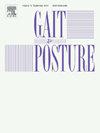使用关节角度子集的神经网络分析女性髌骨痛的任务特异性分化
IF 2.2
3区 医学
Q3 NEUROSCIENCES
引用次数: 0
摘要
背景:髌股痛(PFP)患者在功能测试和活动中表现为机械障碍。研究经常评估这一人群,以了解机械因素与疼痛/错位之间的关系。本研究旨在确定运动变量的不同分组如何在各种功能任务中区分无症状妇女和PFP妇女。方法对35例PFP患者和35例非PFP患者进行7项功能任务的三维运动学评价。所有人都很活跃,年龄在18到30岁之间。为每个任务和组(PFP和对照组)选择七个运动学变量并分为四组:近端,局部,远端和错位。运动学集使用基于神经网络的运动偏差轮廓(MDP)来区分组。为了比较变量集的MDP结果的大小,使用z分数来表示经过平均校正后的对照组的标准差单位的MDP结果。结果最具判别性的集合因任务而异。远端组在着陆时最好地分离各组,近端+局部组在推进时最好地分离组。近端组对楼梯上升最具鉴别性,而近端+远端组对楼梯下降效果最好。偏位变量在侧步下降、前步下降和行走方面表现出较大差异。结论运动变量集,单独或组合,可以区分女性PFP与无症状个体在特定任务的方式。患有PFP的女性似乎会根据不同的任务采取适应性的运动策略。这些发现可以改善临床评估和指导治疗。本文章由计算机程序翻译,如有差异,请以英文原文为准。
Task-specific differentiation of patellofemoral pain in women using a neural network analysis of joint angle subsets
Background
Individuals with patellofemoral pain (PFP) present mechanical disorders during functional tests and activities. Studies often evaluate this population to understand the relationship between mechanical factors and pain/malalignment.
This study aimed to identify how different groupings of kinematic variables can differentiate asymptomatic women from women with PFP in various functional tasks.
Methods
Thirty-five women with PFP and thirty-five women without PFP underwent three-dimensional kinematic evaluation of seven functional tasks. All were physically active and aged between 18 and 30 years old. Seven kinematic variables were selected and grouped into four sets for each task and group (PFP and control): Proximal, Local, Distal and Malalignment. The kinematic sets differentiate the groups using the neural network-based Movement Deviation Profile (MDP). To compare the magnitude of the MDP results of the variable sets, Z-scores were used, expressing the MDP results in units of standard deviation of the control group after mean correction.
Results
The most discriminative sets varied by task. The Distal set best separated the groups during landing, and the Proximal+Local set during propulsion. The Proximal set was most discriminative for stair ascent, while the Proximal+Distal set performed best for stair descent. Malalignment variables showed greater differences in lateral step down, forward step down, and walking.
Conclusion
Kinematic variable sets, alone or in combination, can distinguish women with PFP from asymptomatic individuals in a task-specific manner. Women with PFP appear to adopt adaptable movement strategies depending on the task. These findings may improve clinical assessment and guide treatment.
求助全文
通过发布文献求助,成功后即可免费获取论文全文。
去求助
来源期刊

Gait & posture
医学-神经科学
CiteScore
4.70
自引率
12.50%
发文量
616
审稿时长
6 months
期刊介绍:
Gait & Posture is a vehicle for the publication of up-to-date basic and clinical research on all aspects of locomotion and balance.
The topics covered include: Techniques for the measurement of gait and posture, and the standardization of results presentation; Studies of normal and pathological gait; Treatment of gait and postural abnormalities; Biomechanical and theoretical approaches to gait and posture; Mathematical models of joint and muscle mechanics; Neurological and musculoskeletal function in gait and posture; The evolution of upright posture and bipedal locomotion; Adaptations of carrying loads, walking on uneven surfaces, climbing stairs etc; spinal biomechanics only if they are directly related to gait and/or posture and are of general interest to our readers; The effect of aging and development on gait and posture; Psychological and cultural aspects of gait; Patient education.
 求助内容:
求助内容: 应助结果提醒方式:
应助结果提醒方式:


